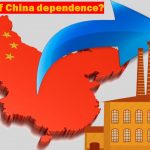Automotive Industry: How past disruptions can help us improvise, adapt and overcome..
The coronavirus pandemic has so far not shown signs of relenting. Several countries have already been in lockdown for a number of days and all aspects of life in general, have been heavily disrupted. Social distancing is being practiced to combat this virus until a cure is found. Work From Home ordinarily does not get a lot of attention. However, these are no ordinary times and as a result, working from home has become the norm. In the previous two blogs, we explored how Work From Home could be made more effective and how the COVID-19 outbreak has impacted the automotive industry. Not only that, we also looked at the different measures and courses of action as recommended by the global experts to tackle the problems caused by this unforeseen situation.
After going through the various steps and action plans suggested by the experts, it prompted me to contemplate about the days to come, i.e. what must be done once the lockdown in so many countries around the world is lifted? What must be done once the threat of the coronavirus is over? How long before the disruptions in the supply chains around the globe can be offset? Once again, I turned towards the experts to get an idea of what they think we might have in store, as we take a look at some curated pieces in this blog.
Learning from the Past
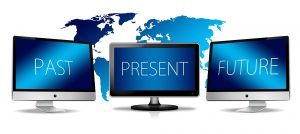 Countries around the world are trying to work out an appropriate reaction to the coronavirus pandemic in the midst of the economic crisis. With entire nations in lockdown in order to prevent the propagation of the virus, it means that important supply chains are being prevented from operating in an effective manner. In order to know what needs to be done, it is necessary to first look into the lessons from the days gone by.
Countries around the world are trying to work out an appropriate reaction to the coronavirus pandemic in the midst of the economic crisis. With entire nations in lockdown in order to prevent the propagation of the virus, it means that important supply chains are being prevented from operating in an effective manner. In order to know what needs to be done, it is necessary to first look into the lessons from the days gone by.
According to the World Economic Forum, five recommendations from past supply chain disruptions are worth remembering:
- Improvement of the compatibility of resilience standards and programmes between countries and various agencies
- Assessment of supply chain and transport risks in procurement, management and governance processes
- Development of reliable networks dedicated to risk management comprising suppliers, consumers, competitors and officials
- Improvement of network risks visibility by information disclosure and development of standardized risk assessment and quantification tools
- Improvement of risk communication before and after disruptions to give rise to a balanced discussion between public and private sectors
 The global economy and international trade have been immensely jolted due to a sudden decline in demand in many sectors and a sharp increase in some others. Foreign investments are also going down significantly. The developing countries, where demand and supply for medical equipment have a glaring mismatch, are expected to be the sufferers of the breakdown in supply chains. To prevent the exacerbation of this issue, there ought to be no restrictions on trade and investments. Exchange of information and adaptability are key in the immediate future.
The global economy and international trade have been immensely jolted due to a sudden decline in demand in many sectors and a sharp increase in some others. Foreign investments are also going down significantly. The developing countries, where demand and supply for medical equipment have a glaring mismatch, are expected to be the sufferers of the breakdown in supply chains. To prevent the exacerbation of this issue, there ought to be no restrictions on trade and investments. Exchange of information and adaptability are key in the immediate future.
What makes you unique?
The next step after looking at lessons from the past is of course, deciding on the plan of action. According to PwC, focus is the need of the hour. Companies need to rethink about what makes them unique and how they can stand out from the rest of the crowd. It’s likely that the current situation might present the industry with a chance to transform and do even better. The companies which have sufficient cash on hand to handle its liabilities and entry to capital markets, as well as those companies which have a well-defined idea of how they are suited to the developing automotive value chain could possibly consider Merger and Acquisition opportunities. It is probable that the coronavirus outbreak could lead to a makeover in the supply chains to concentrate more on recovery. Through the lessons learned from this pandemic, a deeper understanding of supply chains in various dimensions is expected. Additionally, developing an all-inclusive and hands-on modelling approach based on the learnings will prime the automotive industry to face the next disruption.
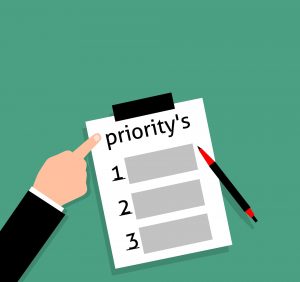 PwC says that this crisis might even bring to the fore the issues faced by some companies which already required consideration and can no longer be kept on the back burner. Companies may find out how many temporary fixes have been set up for everyday activities. All of a sudden, rejigging the human resource and finance department becomes highly significant. Cloud transformation and economic crime solutions take precedence, in case data centers are situated in high-risk or affected areas, or such a situation where scammers try to exploit the market noise.
PwC says that this crisis might even bring to the fore the issues faced by some companies which already required consideration and can no longer be kept on the back burner. Companies may find out how many temporary fixes have been set up for everyday activities. All of a sudden, rejigging the human resource and finance department becomes highly significant. Cloud transformation and economic crime solutions take precedence, in case data centers are situated in high-risk or affected areas, or such a situation where scammers try to exploit the market noise.
Improvise, Adapt, Overcome…
Another reality of the post-COVID-19 phase is likely to be the emergence of digital workplaces in companies all around the world. According to Accenture, the COVID-19 pandemic is very likely to deeply alter the way we work and engage. Accenture recommends developing an all-encompassing Elastic Digital Workplace implementation plan, which concentrates on 6 key dimensions, which as seen in the figure are: Culture and Awareness, Elastic Collaboration, Virtual Work Environment, Seamless Networking, Distributed Continuity, and Adaptive Security.
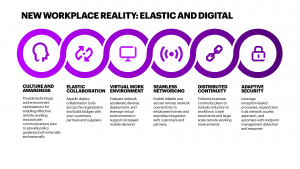
Image Source: Accenture
The move towards and reliance on digital strategy is also echoed by Forbes. According to Bernard Marr of Forbes, digital strategy could well be the deciding factor in whether businesses make it through these catastrophic times. B2B companies and smaller businesses who are dependent on exhibitions, trade shows, referrals, as well as large companies seem to have potentially incurred losses of millions due to the cancellation of events. However, by reassigning marketing budgets, these companies will have to make the move to digital marketing.
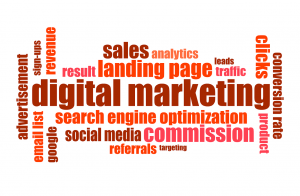 Adaptability is a key point. If the norm was to do business in person, adaptability might mean exploring and utilizing new digital means, such as social media or professional platforms where business relations can be developed. More time can be dedicated to developing digital marketing strategies. I agree with Bernard Marr when he says that digital marketing is here to stay. It may be an emergency solution at the moment, but there is a real possibility that this strategy could offer real value when normalcy resumes. In the course of time, it could better equip businesses to tackle such situations in the future.
Adaptability is a key point. If the norm was to do business in person, adaptability might mean exploring and utilizing new digital means, such as social media or professional platforms where business relations can be developed. More time can be dedicated to developing digital marketing strategies. I agree with Bernard Marr when he says that digital marketing is here to stay. It may be an emergency solution at the moment, but there is a real possibility that this strategy could offer real value when normalcy resumes. In the course of time, it could better equip businesses to tackle such situations in the future.
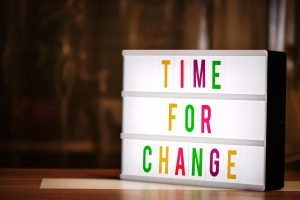 To sum up, it is necessary for the companies and businesses to act now. Delay in decisions and failure to adapt are bound to have immediate as well as long-lasting detrimental impacts. Thus, in order to minimize disruption and in turn, preserve the health of the employees as well as that of the organization, companies need to learn from past lessons and develop a deeper understanding of the supply chains so as to be ready for future disruptions. Not only that, companies have to shed their rigidity and be willing to adapt to changing needs by embracing digital marketing strategies to restore the lost opportunities.
To sum up, it is necessary for the companies and businesses to act now. Delay in decisions and failure to adapt are bound to have immediate as well as long-lasting detrimental impacts. Thus, in order to minimize disruption and in turn, preserve the health of the employees as well as that of the organization, companies need to learn from past lessons and develop a deeper understanding of the supply chains so as to be ready for future disruptions. Not only that, companies have to shed their rigidity and be willing to adapt to changing needs by embracing digital marketing strategies to restore the lost opportunities.
Sources:
https://www.weforum.org/agenda/2020/03/covid-19-coronavirus-lessons-past-supply-chain-disruptions/
https://www.pwc.com/us/en/library/covid-19/coronavirus-impacts-automotive.html
https://www.accenture.com/us-en/about/company/coronavirus-solution-elastic-digital-workplace




